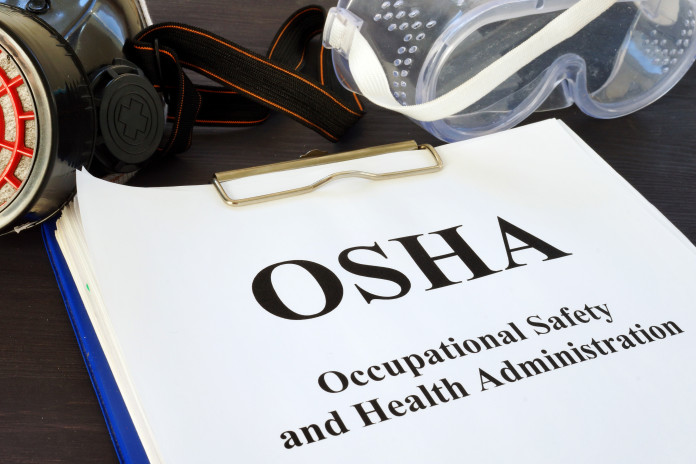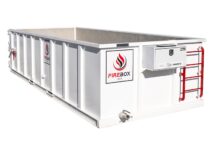Have you ever heard of terms like “general duty” and “multiple employer liability,” along with “multiple employer worksite”? I hadn’t either until I worked on a blockbuster case this year – and a conversation, actually an argument, I had last year suddenly made sense.
People in the towing industry, especially, need to pay attention to these terms, and I’ll gladly explain them. They all revolve around OSHA standards that determine liability in case of an incident, crash, or injury. And, in the case of a contractor doing something wrong on your tow yard, YOUR company is actually at the top of the list for liability when the lawsuits start flying. Deny it all you want, like those guys did last year, but it’s true, accurate, and can cost you a fortune.
The first thing to understand is that your tow yard is a “worksite” as designated and outlined by OSHA. The things that concern you about DOT, FMCSA, and state towing regulations also apply, but OSHA trumps them all when there’s an injury or wreck – especially when the tow, movement, or action ORIGINATED at your place of business. “General duty” applies to anyone trained in safety regulations, as they have a general duty to stop unsafe acts and correct them. Multi-employer liability and a multi-employer worksite is simple – think of a general contractor building a house. That contractor, by OSHA standards, is not only responsible for his own crew, but all subcontractors who come onto the worksite to perform work. Also, each subcontractor is also still responsible for their own people, and in many cases, the safety of others if that subcontractor has a general knowledge of what the other crew is doing.
Think about how that applies to your tow yard…it’s all about “industry accepted standards” and who understands them. And you’ve trained all your people and they understand the standards in the industry.
Last year, I was working a contract job and actually got into an argument with several people at a company’s tow yard over liability. I referenced that conversation in one of my articles last year. It wasn’t until I worked a completely different liability case this year for a lawfirm in Louisiana that I saw how this all plays out. Pay attention and I will describe for you how your company can lose everything over something seemingly simple.
To refresh your memory, an outside contractor for Copart came to the yard to pick up a wrecked car. Typical process, the driver gave us information on the vehicle, filled out a check, got the paperwork and keys, and loaded the car. He only used one side of the bridle up front, with a mini-J in the frame, and one chain out back with a J-hook on the rear axle. I went to stop the guy to tell him to hook up the car properly, and the guys I was working with lost their ever-loving minds. They insisted that I had no business telling a guy from another company how to secure a car, and that “we” had no liability if the guy got into a wreck and the car became a projectile. I knew they were wrong, and didn’t push it, but it has bothered me ever since. It really bothered me when the details of this case in Shreveport, Louisiana played out. An outside contractor came to an auction yard, was picking up a wrecked Kenworth truck, and cobbled together a pile of stuff to rest the front end on while the two guys (contractors) forced the front axle of the truck back into its original place – so they could move the truck piggyback-style. They banged on it with hammers, pulled on the axle with ratchet straps, used prybars, and finally, they moved the truck enough to where it fell down and landed on the guy underneath, severing both of his legs.
Now, the liability claims start flying. The auction yard has the first level of responsibility because it happened on their property. Their people should have recognized a dangerous scenario and stopped it. The company that contracted the contractor came in second – and they weren’t even there. Then, the actual contractors who were moving the truck came in last. Everybody paid until their insurance policies maxed out and then they paid some more. The truck buyer who contracted the contractor, and the contractor himself, went out of business. The auction business paid in the eight-figure range.
Can you afford that? Because in that scenario, you and your towing company are first in line like the auction service since the vehicle would be on your property and the incident happened there. Even if the vehicle had made it off the property but had been haphazardly secured and caused a crash down the road, the auction service (or your company) would be primarily at fault because your people know the safety and securement rules that apply, and the rules weren’t followed.
Given this case as an example and applying that standard back to the tow yard where I was obstructed from correcting a driver – not only is it your responsibility to observe and correct unsafe acts, but you will also be held responsible if someone commits an unsafe act where your company is ANYWHERE in the chain of events – and you’ll be at the top of the list of defendants.
Don’t believe me? Let me show you the OSHA guidance that is the base standard – this is the standard that the lawyers apply and essentially blame everyone who had a hand in or an eyeball on a situation.
Under the Occupational Safety and Health (OSH) Act of 1970, the guidance is simple:
Each employer –
(1) shall furnish to each of his employees employment and a place of employment which are free from recognized hazards that are causing or are likely to cause death or serious physical harm to his employees.
(2) shall comply with occupational safety and health standards promulgated under this Act.
(3) Each employee shall comply with occupational safety and health standards and all rules, regulations, and orders issued pursuant to this Act which are applicable to his own actions and conduct.
Those few words are the pillars and backbone of all personal injury litigation.
Here is the OSHA regulation that allows individuals and companies to enforce OSHA standards and protect them from reprisals:
1960.28(c)
Any employee or representative of employees, who believes that an unsafe or unhealthful working condition exists in any workplace where such employee is employed, shall have the right and is encouraged to make a report of the unsafe or unhealthful working condition to an appropriate agency safety and health official and request an inspection of such workplace for this purpose. The report shall be reduced to writing either by the individual submitting the report or, in the case of an oral notification, by the above official or other person designated to receive the reports in the workplace. Any such report shall set forth the grounds for the report and shall contain the name of the employee or representative of employees. Upon the request of the individual making such report, no person shall disclose the name of the individual making the report or the names of individual employees referred to in the report, to anyone other than authorized representatives of the Secretary. In the case of imminent danger situations, employees shall make reports by the most expeditious means available.
DOT rules, FMCSA guidelines, and state towing laws are important – but it is OSHA that steps in and calls the shots in any case of personal injury or death.
And yes,
(1) You’re at the top of the list come litigation time,
(2) What that contractor does is not only your business, but also your requirement to monitor and correct.
Remember – your tow yard is a “worksite” by OSHA standards – as is a towing or recovery scene – treat it accordingly and protect yourself.









